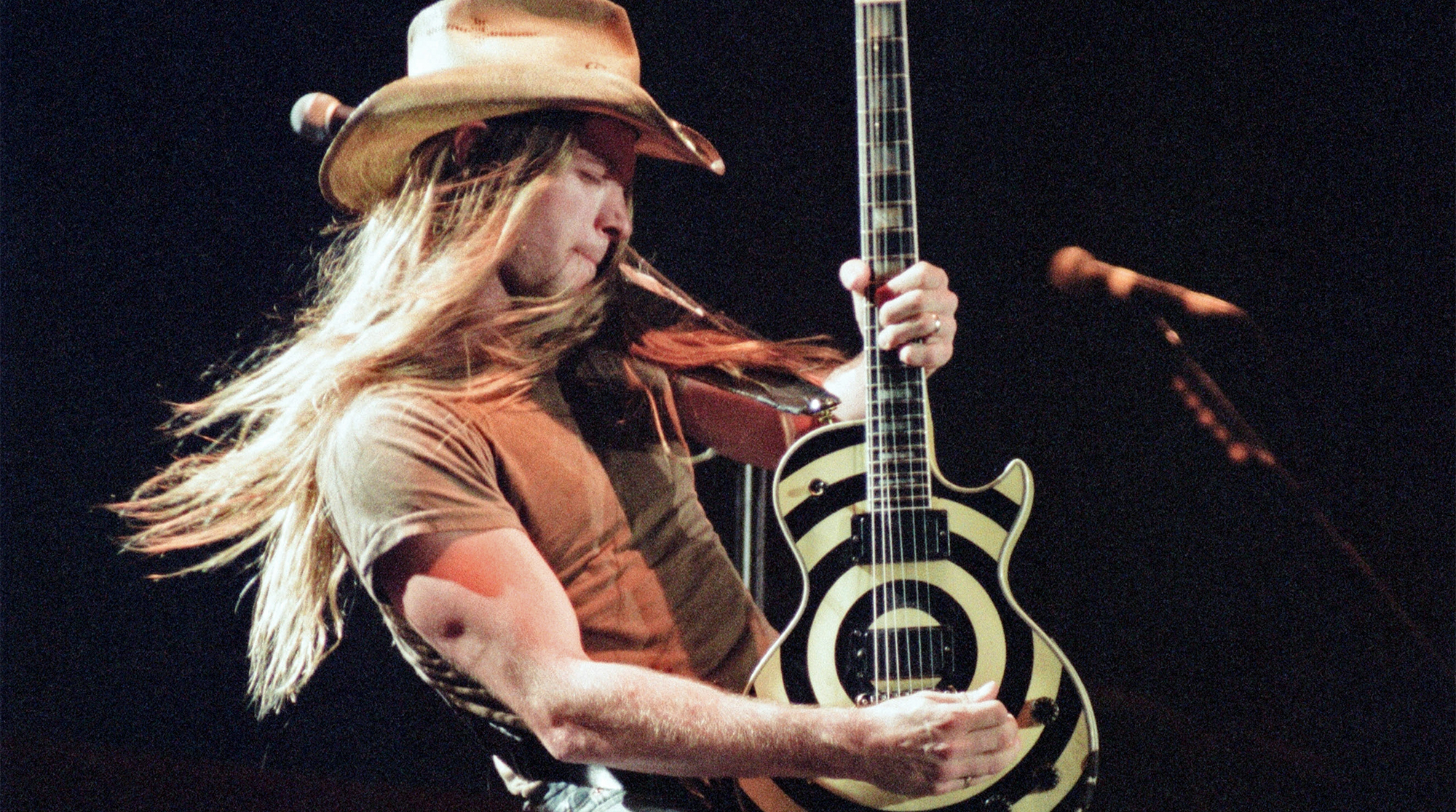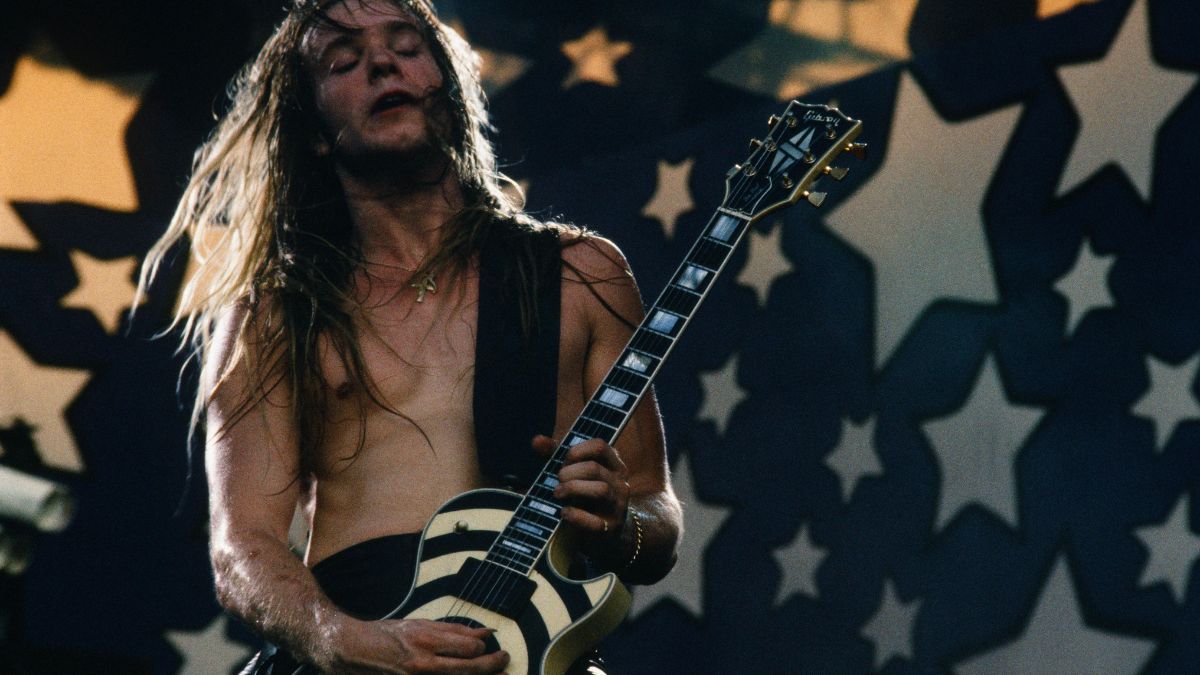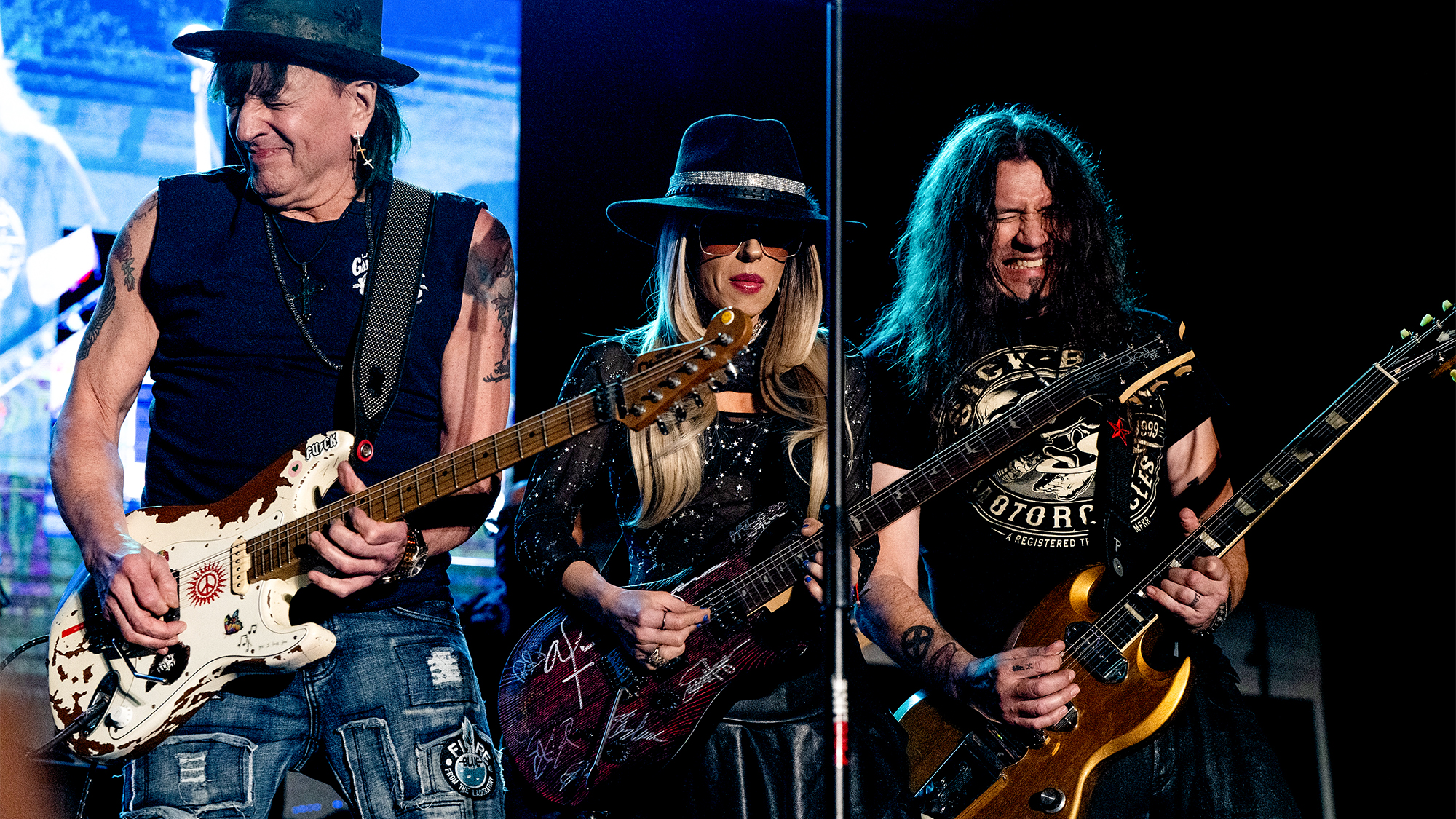“I realized I was gonna look like I was trying to be Randy Rhoads, with the cream Les Paul, so I sent it to be refinished.” Zakk Wylde says his famous bull’s-eye guitar — used on Ozzy Osbourne's records — was the result of a design mistake
Dubbed the Grail, the cream Les Paul Custom was the axe of Zakk's dreams. It's distinctive design pattern went on to become his trademark

As Zakk Wylde prepared for a photoshoot shortly after becoming Ozzy Osbourne’s third full-time guitarist, he had a realization. His cream-colored Gibson Les Paul, known lovingly as the Grail, cut too close to the bone of the late Randy Rhoads’ much-played instrument. He needed a signature look, but the one he got back from the mod shop was not what he had asked for.
Wylde’s rise from unknown guitar teacher to Ozzy’s right-hand riff-slinger is well known. He’d beaten notable, fast-rising shredders like Adrian Vandenberg and Chris Impellitteri with his audition, and in doing so, changed both his career path and Ozzy’s by bringing a grungier brand of metal into the new decade.
Getting the gig also turned Gibson’s eye, who were quick to endorse the guitarist as one of their own. That afforded Wylde the chance to get his hands on his dream guitar: namely, the Grail, a 1981 Les Paul Custom then owned by his friend Scott Quinn.
“A friend of mine, Scott Quinn, who used to work at Garden State Music in New Jersey, made a deal with me,” he tells Guitar World. “I was endorsed by Gibson after I'd gotten the gig with Ozzy. Scott, a huge John McLaughlin fan, said that if I could get him a double-neck, he'd trade the Grail for it. Gibson hooked me up, and I made the trade.”
The Les Paul Custom came fully loaded with EMGs, high-powered active pickups that had blown Wylde's mind not long before the trade. For Wylde, it was the one.
“I'd played this guitar and been knocked out by how amazing it sounded and how well it played,” he reflects. “When I plugged it into my Marshall combo, I was astounded.”
He wrote “Miracle Man,” his first song for Ozzy, on the guitar, and it still had its stock cream paint job when they entered the studio to track their album No Rest for the Wicked.
All the latest guitar news, interviews, lessons, reviews, deals and more, direct to your inbox!
It was only when it came to doing promo photos that Zakk realized a cream LP was Randy’s thing.
“After we'd recorded No Rest for the Wicked, I was gonna be shooting some photos and I realized I was gonna look like I was trying to be Randy, with the cream Les Paul,” he says, “so I sent it to be refinished.”
Zakk asked to have the guitar finished with a vertiginous-patterned design.
“It was meant to look like the poster for [the 1958 Alfred Hitchcock film] Vertigo,” Zakk explains. “But it came back with the bull's-eye.”
A quick Google reveals two different versions of the movie poster: one with a more intricate spiraling design, and another more akin to the bull's eye, but with thinner circles. It’s not clear which one he wanted, and that probably explains the mix-up.
Either way, the bull's-eye was what he got.
“I realized it was pretty cool anyway, and I’ve made it a signature look ever since,” he continues. “Most of the records I did with Ozzy featured this guitar.”

Then the cruel hands of fate snatched the guitar from him, and Wylde, with a heavy heart, consigned the formidable axe to the history books.
“Around 2000, it fell out of our gear trailer,” he says. “It came with one of those tough chainsaw cases, so it survived crashing onto the highway.”
Wylde wasn't certain about his electric guitar's fate until, aptly, a miracle happened.
“It turned up in a pawn shop,” Wylde reveals. “Someone bought it, realized it was mine and, three years after I'd lost it, contacted me and sold it back.”
The Grail has since been retired, and kept well away from highways, having launched his gear brand, Wylde Audio, in 2016 – just be sure to avoid this fake, AI-infested Wylde Audio website.

“I exclusively use Wylde Audio models now,” Zakk adds. “They're exactly the same as the ones for sale. They're already modded, because they're built to my specs, with the Tone Pros hardware, the EMGs and everything.” And if disaster strikes, the sentimentality wouldn’t be half as brutal.
Elsewhere, Wylde has discussed what he deems the five greatest riffs in rock history, and peeled back the curtain on his final meeting with Ozzy, the message he received from him afterwards, and how he never thought that this was the end for the Prince of Darkness.
A freelance writer with a penchant for music that gets weird, Phil is a regular contributor to Prog, Guitar World, and Total Guitar magazines and is especially keen on shining a light on unknown artists. Outside of the journalism realm, you can find him writing angular riffs in progressive metal band, Prognosis, in which he slings an 8-string Strandberg Boden Original, churning that low string through a variety of tunings. He's also a published author and is currently penning his debut novel which chucks fantasy, mythology and humanity into a great big melting pot.


